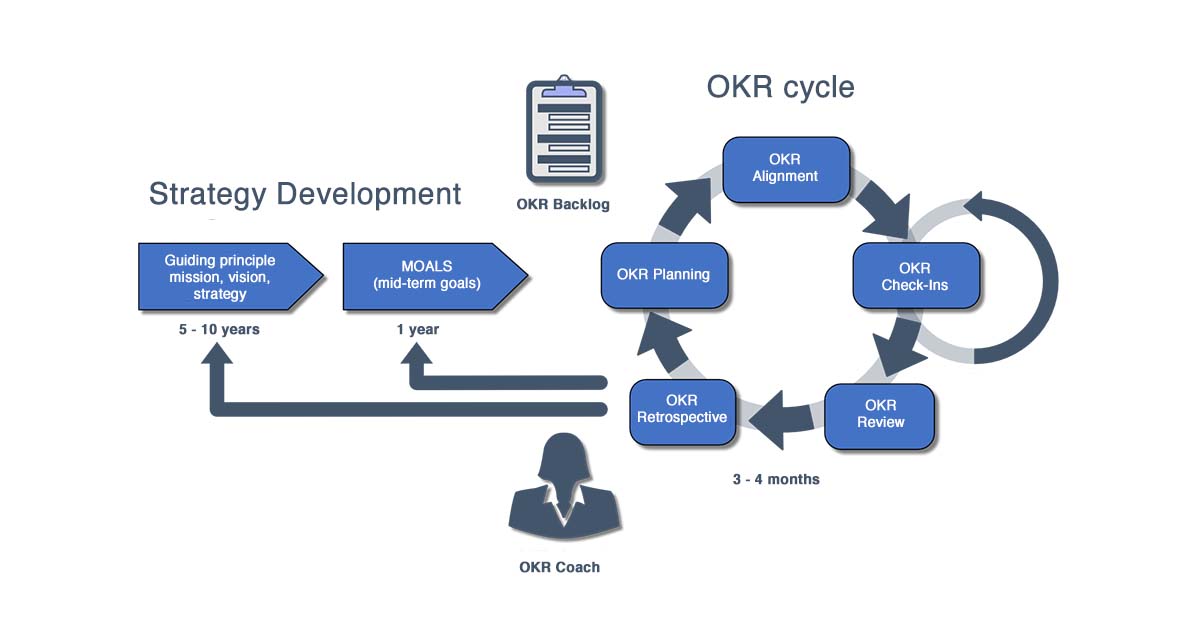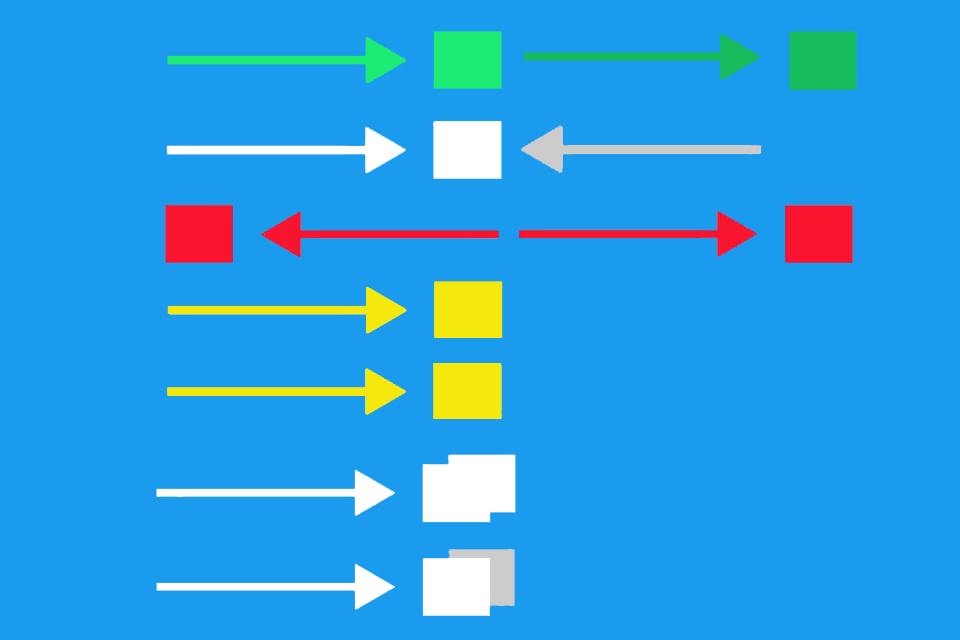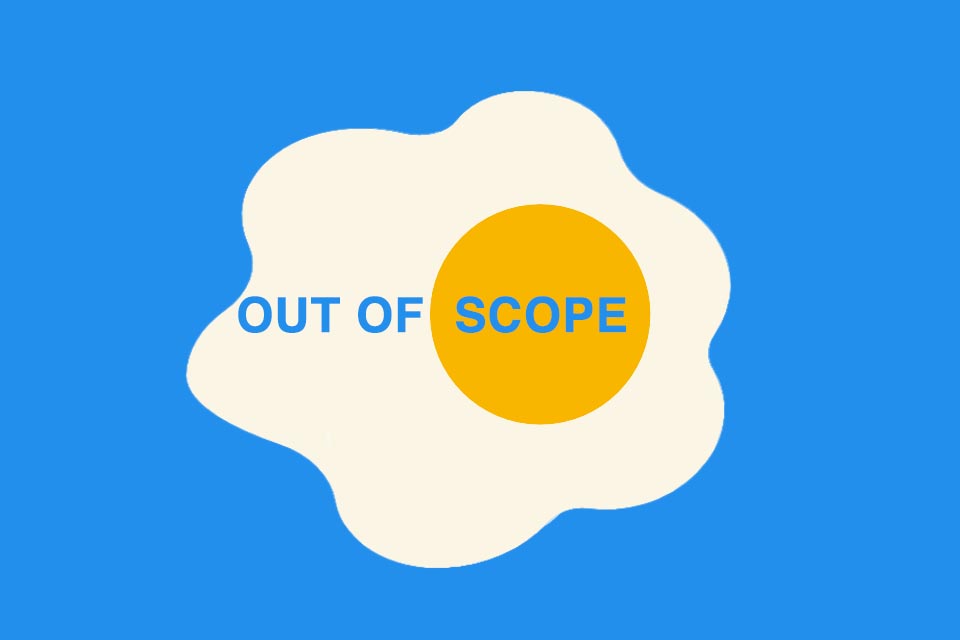What is OKR (Objectives and Key Results)?
Table of Contents: Definition – Wording – OKR Cycle – Questions from the field – Download – Notes
Smartpedia: OKR (Objectives and Key Results) is a framework for strategy work and people management with qualitative objectives and measurable results.
OKR – A framework for strategy work and people management
Many companies today are faced with the challenge of operating in a complex world and therefore utilise Objectives and Key Results (OKR).
OKR is an approach to holistic strategy work and employee management. Qualitative objectives and measurable key results are defined in order to validate a company’s strategy.
Objectives and Key Results are characterised by
- a space for action to be actively shaped,
- an iterative, incremental and focused approach,
- a supportive and networked cooperation,
- short-term planning cycles,
- the limitation of goals and
- independent goal setting at team level with orientation towards corporate goals.
With these characteristics, organisations ensure focus and clear target agreements, while increasing transparency for all stakeholders. Furthermore, the expansion of agile principles throughout the organisation is supported without itself constituting an agile target system.
The idea for the framework was developed in the early 1970s by Andy Grove1, the co-founder of Intel. Objectives and Key Results became really well known through Google, which has been using the framework since its foundation.2 In recent years it has also become increasingly popular in Germany.
The wording of OKR?
Objectives and Key Results consist of two components:
- Objectives are short and precise inspirational descriptions of a desired target state.
- Key Results are metrics that make both progress and achievement of objectives measurable. For each objective you usually express between 2 and 5 key results.
When phrasing OCR, there is a crucial approach: Each OKR is a description of a solution, an effective improvement or an impressive result. In other words: Objectives and Key Results are measurable impact targets that are thought up by the customer or the market.
The following OKR was developed by YouTube in 2016 and combines all the characteristics of a good formulation. It is precise, motivating and truly ambitious!
- Objective: “We will become the market leader in the segment of free streaming videos.”
- Key Result: “We achieve 1 billion hours of video viewing time per day.”
OKR cycle – a continuous process
The OKR cycle is a continuous process and distinguishes between strategy development (left) and the actual cycle (right), which usually runs with a frequency of three to four months.
- A mission is the permanent and long-term task that justifies the existence of the organisation or a product.
- A vision is an ambitious and clear picture of the future, which describes where the organisation or a product wants to be in the coming years.
An important question in the phrasing is therefore:
“What is the problem we have to solve in order to come closer to our vision in a sustainable way?”
An example of a nice mission statement can be found on the Nike website:3
“Our Mission: Bring inspiration and innovation to every athlete* in the world. * If you have a body, you are an athlete”.
The ceremonies in the OKR cycle are:
- MOAL Planning – The Mid-Term Goal (MOAL) is the link between the long-term vision and the short-term, operational OKR (usually 3-4 months). Here, the period of 1 year is considered. MOAL planning is usually planned with a timebox of 8 hours.
- OKR Planning – The joint elaboration of the goals for the next cycle. Planning is done first at the company level and then at the team level. Planning at team level is self-organised. Usually a timebox of 4 hours is used.
- OKR Alignment – Alignment of all the objectives of the organisation. This can take one to two days.
- OKR Check-ins – Regular assessment of progress at the organisational and team level, usually once a week. Some publications also refer to a Weekly OKR. The usual duration is 15 minutes.
- OKR Review – The joint discussion of all goals and goal achievements, as well as all impediments to ensure transparency and as a basis for validated learning. Usually a timebox of 2 hours is set.
- OKR Retrospective – Reflection on how the team worked in the completed cycle. Again, usually 2 hours are used.
The OKR Coach promotes and accompanies the process at company level. The Objectives and Key Results formulated in the company are summarised in a common OKR Backlog – sometimes also called OKR List – visible to all employees. It is the only prescribed artefact in the framework.
Questions from the field
Here you will find some questions and answers from the field:
What benefits do OKR offer?
The benefits of the framework can be derived from 6 principles:
- They focus an organisation on common impact goals.
- They create transparency about all the organisation’s goals.
- They enable validatable experiments for change based on data.
- They promote personal responsibility in the teams through self-organised team goals.
- They enable moonshot goals and thinking ‘out of the box’ for innovation and significant improvement in the organisation.
- They promote critical thinking throughout the organisation by consistently testing the effectiveness of decisions.
They are also suitable for continuously evaluating and reviewing the added value of activities and hypotheses about the future using data.
What tips will help you get started with OKR?
With these 7 tips, you can get started with Objectives and Key Results:
- Make sure you have a clear vision and strategy before rolling out.
- Start small before rolling out the framework across the organisation. A good starting point is the leadership team.
- Start at the corporate level with an OKR.
- Invite their staff and experts to the goal development.
- Think about the game and not about winning! Every day counts in goal achievement.
- Celebrate successes right from the start!
- Ideally, have an experienced coach accompany you during the introduction.
What tips help when using Objectives and Key Results?
The following tips will help during use
- It is not an employee evaluation method, but a framework for strategy work.
- Linking it to a bonus system is wrong.
- Missed objectives are not sanctioned, but used as input for future objectives.
- Lack of management support is the beginning of the end.
- Without a mission statement, the effort cannot succeed.
- Too many goals overwhelm any organisation.
- Speaking is silver, action is gold. It makes sense, for example, to set concrete steps after defining the key results in order to move directly into action. Validating these actions can become part of the weekly check-ins.
And last but not least: the use of software for implementation does not have to be advantageous.
What does alignment mean in the context of OKR?
Many companies cite ‘alignment’ – i.e. the strategic orientation of the company – as the reason for introducing OKR. This alignment can be realised through a shared vision, a suitable strategy and appropriate goals. It is therefore important that everyone involved understands
- the direction in which the company is heading,
- what future the company wants to create,
- why something is being done and what value this has for customers, users, clients, colleagues or society, and
- what impact the company wants to achieve.
Here Cansel Soergens describes in detail how companies can create alignment.
Is OKR an agile target system?
OKRs are ostensibly also about objectives. But what is an objective in the OKR is actually an entrepreneurial hypothesis. During the term of an objective (usually 3 months), this hypothesis is anticipated and tested in the team as one hundred per cent truth. Later, during the retrospective, the hypothesis is analysed on the basis of data, the key results. The next hypothesis is then planned and validated on the basis of the knowledge gained. In short: it is not an agile target system.
What metrics can be used to measure the success of OKR?
Goal achievement:
- Degree of fulfilment: How many OKR were actually achieved?
- Average progress: How far were objectives and key results pursued on average?
- Distribution of goal achievement: How evenly is progress distributed across teams?
Quality:
- Measurability: Are the key results clearly quantifiable?
- Level of ambition: How challenging are the OKR that have been set?
- Relevance to strategy: To what extent do objectives and key results contribute to the corporate strategy?
- Coherence: Do the key results really fit the respective objective?
Collaboration:
- Coordination rate: How many OKR are coordinated across teams?
- Cross-functional contributions: How many key results are jointly owned by multiple teams?
- Transparency: Are objectives and key results openly accessible and traceable?
- Top-down/bottom-up balance: How balanced is OKR creation at all levels?
Learning culture:
- Retrospective rate: How often do reflections take place?
- Number of identified learnings: How many concrete learnings have been documented?
- Implementation of learnings: How many learnings are actively incorporated into new cycles?
- Coaching intensity: How strong is the accompanying support in the process?
Commitment
- Participation in formulation: How many employees are actively involved in formulation?
- Commitment rate: How many teams stand behind their set goals?
- Mentions in meetings: How often are objectives and key results discussed in regular meetings?
- Check-in frequency: How often are progress updates provided?
- Time spent per cycle: How much time do teams invest in planning, tracking and retrospectives?
These metrics not only help measure success, but also provide valuable insights into where there is room for improvement in the OKR process.
What are similarities and differences between OKR and MBO?
Management by Objectives (MBO) is a transactional leadership technique developed by Peter Ferdinand Drucker in 1954, which postulates the setting of clear goals and the regular review of progress towards these goals. It is generally assumed that Objectives and Key Results was influenced and developed further by the principles of Management by Objectives.
In detail, both approaches differ from each other4:
- MBO objectives are often formulated quantitatively by Key Performance Indicators (KPI), whereas OKR is about qualitative objectives, which are broken down into quantitative key results by Key Results. Thus, Management by Objectives focuses on results, whereas Objectives and Key Results also give central importance to the process of goal achievement.
- MBO follows a top-down approach5, according to which the company’s goals are set by the management level and subsequently broken down to the divisions, departments, teams and, if applicable, employees. Even though the implementation of Objectives and Key Results is similar in many companies, the approach itself addresses a holistic strategy work that starts with the vision and purpose of the company and extends through strategy development and strategy implementation to strategy validation. In a sense, it is both a top-down and a bottom-up approach.
- Objectives are often formulated once a year in Management by Objectives. This is roughly equivalent to the Mid-Term Goals (MOAL) in Objectives and Key Results. Such a period allows for constant work towards the defined goals. An OKR cycle usually lasts only 3-4 months, so that staff and organisations can react quickly to events or new findings. Check-ins, reviews and retrospectives are appropriate formats for exchange.
In summary, MBO is a more traditional and structured approach and OKR is a more agile and flexible approach.
Which tools help when working with objectives and key results?
- Alignment
- Corvisio
- culture.easy
- Datalligence AI
- Fitbots
- GroSum
- intry
- mesh
- Microsoft Viva
- okrs.app
- perdoo
- Peoplebox
- Quantive
- Steer
- SugarORK
- Talbit
- Unlock:OKR
- Weekdone
- WorkBoard
- Workpath
- Workteam
- xto10x
It is certainly easy to add to the list, especially as there are numerous products that are used in organisations to work with targets but originally have a different marketing focus.
How does management get behind the approach without setting the Objectives and Key Results top-down? And what do you think of the statement “We don’t rise to the level of our goals, we fall to the level of our systems!” by James Clear6?
Notes:
[1] Andy Grove explains Objectives and Key Results in a video (2:26 min)
[2] Google explains how to work with the framework (1:22 Std.)
[3] Mission Statement from Nike
[4] Some publications describe further differences such as intrinsic or extrinsic motivation, silo thinking or a willingness to take risks. The extent to which such attributions are scientifically valid or to a certain extent correspond to wishful thinking is presumably decided in actual corporate practice.
[5] It is also often pointed out that MBO could also take place bottom-up. This may be the case in individual cases, but then the name of the approach – Management by Objectives – is probably not quite right. In the 1950s, leadership came from executives who, in the vast majority of companies, were located higher up in an organisation. This is probably similar today, even if MBO is probably less popular as an approach.
[6] James Clear: Atomic Habits.
Are you interested in a German language OKR Podcast?
German service provider wanted? Our recommendation: André Claaßen.
“Be bold, embark on a journey to a more agile and adaptive organisation. You are in for instructive and successful times ahead.”
Here you will find additional information from our Smartpedia section:





